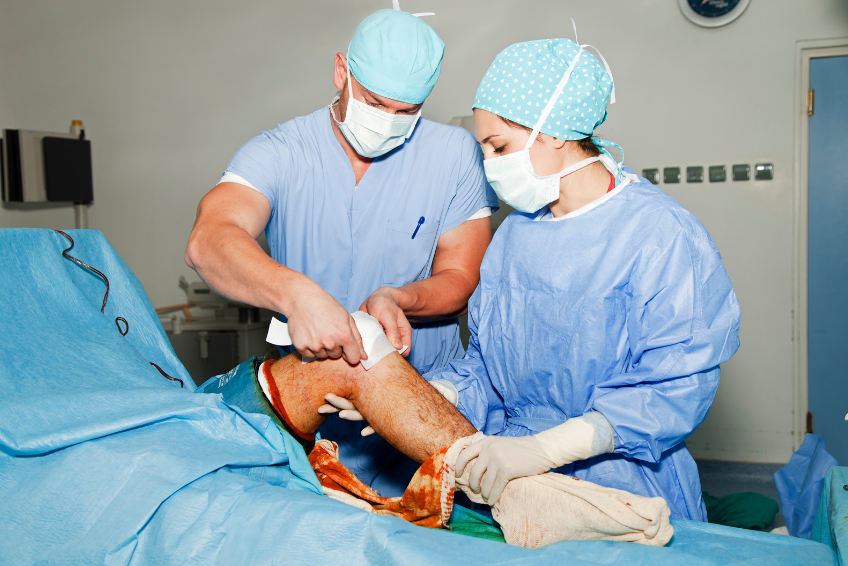Knee problems can significantly impact mobility and quality of life, often requiring surgical intervention for effective treatment. Among the advanced options available, arthroscopic knee surgery stands out as a minimally invasive approach that offers several distinct advantages over traditional procedures.
What is Arthroscopic Knee Surgery?
Arthroscopic knee surgery is a modern surgical technique used to diagnose and treat knee joint problems through small incisions and a tiny camera, called an arthroscope. Unlike traditional open knee surgery, which requires larger incisions to access the knee joint directly, arthroscopic surgery uses smaller incisions and specialized tools inserted through these openings. This method allows surgeons to visualize and operate within the knee joint with exceptional precision.
Advantages of Arthroscopic Knee Surgery Less Invasive Procedure
Arthroscopic knee surgery is renowned for being a less invasive procedure compared to traditional methods. This minimizes trauma to surrounding tissues, reduces bleeding during surgery, and leads to quicker recovery times for patients undergoing knee surgery.
Lower Risk of Complications
One of the significant benefits of arthroscopic knee surgery is its lower risk of complications compared to open surgery. With smaller incisions, there is reduced exposure to potential infections and a lower incidence of post-operative pain, contributing to a smoother recovery process for individuals undergoing knee surgery.
Improved Accuracy and Precision
The use of high-definition cameras and specialized instruments in arthroscopic knee surgery enhances the accuracy and precision of surgical procedures. Surgeons can visualize the internal structures of the knee joint in detail, facilitating targeted treatment of issues such as repairing torn ligaments or removing damaged cartilage, which are common reasons for knee surgery.
Quicker Rehabilitation
Patients who undergo arthroscopic knee surgery typically experience quicker rehabilitation times compared to those undergoing traditional open surgery. The minimally invasive nature of the procedure allows for earlier initiation of physical therapy, which is crucial for restoring strength and mobility in the knee joint post-surgery.
Outpatient Procedure
In many cases, arthroscopic knee surgery can be performed on an outpatient basis, meaning patients can return home the same day as their surgery. This not only reduces hospitalization costs but also allows individuals to recover in the comfort of their own homes, promoting a faster recovery and quicker return to daily activities following knee surgery.
Conditions Treated with Arthroscopic Knee Surgery
Arthroscopic knee surgery is highly effective in treating a variety of knee conditions, including meniscal tears, anterior cruciate ligament (ACL) reconstruction, and cartilage damage. Each of these conditions can cause significant pain and limitation in knee function, and arthroscopic surgery offers tailored treatment options to address these issues directly.
Recovery and Rehabilitation
Following arthroscopic knee surgery, patients are typically provided with specific post-operative care instructions to optimize recovery. Physical therapy plays a crucial role in the rehabilitation process, helping patients regain strength, flexibility, and range of motion in the knee joint after surgery. The recovery timeline varies depending on the individual and the specific procedure performed, but most patients can expect gradual improvement in knee function over several weeks to months.
Takeaway
Arthroscopic knee surgery offers numerous benefits that make it a preferred choice for treating various knee joint conditions. From its minimally invasive nature and reduced risk of complications to its precise surgical capabilities and quicker rehabilitation times, arthroscopic knee surgery represents a significant advancement in orthopedic care.






